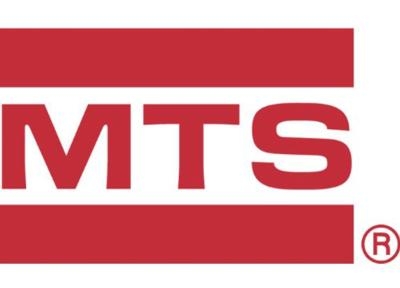Tue, Jul 22, 2014
Test System Used By Snecma In Evaluation Of LEAP Turbofans
MTS Systems Corporation ... a supplier of high-performance test systems and position sensors, recently delivered a state-of-the-art test system to French aircraft engine manufacturer Snecma (Safran). The test system is being used for highly complex testing and certification of fan blades made from advanced composite materials for the next-generation LEAP turbofan. The new engine is designed to deliver significantly cleaner, quieter and more fuel-efficient performance than current jet engine designs.

The LEAP engine was developed by CFM International, a joint company between Snecma (Safran) and General Electric. It is the successor engine for the CFM56 line and is slated to equip the Airbus A320neo and Boeing 737 MAX aircraft, among others.
The MTS test system is engineered to simulate the dynamic forces experienced by fan blades in a real-world jet engine operating environment. The system comprises a high-force servo-hydraulic load frame outfitted with a unique configuration of vertical and lateral actuators capable of accurately replicating the combination of forces.
According to Dr. Mike Jost, Senior Vice President and General Manager of MTS Test, developing the Snecma test system posed unique engineering challenges. "The test program requires that fan blade specimens be subjected to 1.4 million load cycles over the course of six months. Adding to this challenge, Snecma required that this high-frequency system also be adaptable to test blade sizes and geometries beyond those required by the first application program. To meet these aggressive test requirements, we engineered a custom test solution to provide precise control of complex forces and motions at high frequencies."
"The new LEAP jet engine promises to lower fuel consumption and emissions by 15 percent when compared to today's engines, saving fuel and reducing the impact on our environment," said Dr. Jeffrey Graves, President and Chief Executive Officer of MTS Systems Corporation. "Our close collaboration with Snecma in the development of this next-generation technology exemplifies the pivotal role MTS technology can play in meeting one of the key challenges of our time – building a cleaner, more fuel-efficient global transportation infrastructure."
More News
Terminal Radar Service Area Airspace surrounding designated airports wherein ATC provides radar vectoring, sequencing, and separation on a full-time basis for all IFR and participa>[...]
Aero Linx: Utah Back Country Pilots Association (UBCP) Through the sharing experiences, the UBCP has built upon a foundation of safe operating practices in some of the most challen>[...]
From 2010 (YouTube Edition): Imagine... Be The Change... Inspire FROM 2010: One of the more unusual phone calls I have ever received occurred a few years ago... from Anousheh Ansar>[...]
(Pilot) Felt A Shudder And Heard The Engine Sounding Differently, Followed By The Engine Chip Detector Light On April 14, 2025, about 1800 Pacific daylight time, a Bell 206B, N1667>[...]
Also: AMA Names Tyler Dobbs, More Falcon 9 Ops, Firefly Launch Unsuccessful, Autonomous F-16s The Air Force has begun ground testing a future uncrewed jet design in a milestone tow>[...]
 ANN's Daily Aero-Term (05.07.25): Terminal Radar Service Area
ANN's Daily Aero-Term (05.07.25): Terminal Radar Service Area ANN's Daily Aero-Linx (05.07.25)
ANN's Daily Aero-Linx (05.07.25) Classic Aero-TV: Anousheh Ansari -- The Woman Behind The Prize
Classic Aero-TV: Anousheh Ansari -- The Woman Behind The Prize NTSB Prelim: Bell 206B
NTSB Prelim: Bell 206B Airborne-NextGen 05.06.25: AF Uncrewed Fighters, Drones v Planes, Joby Crew Test
Airborne-NextGen 05.06.25: AF Uncrewed Fighters, Drones v Planes, Joby Crew Test



